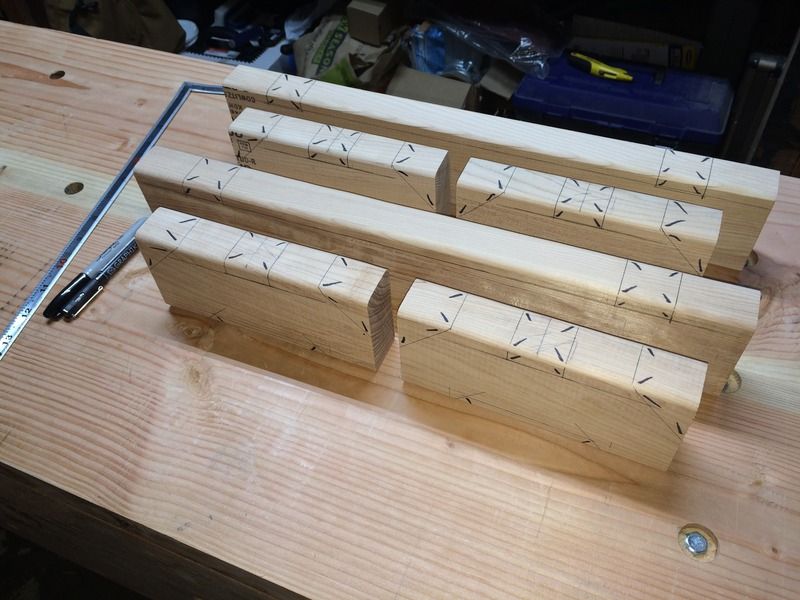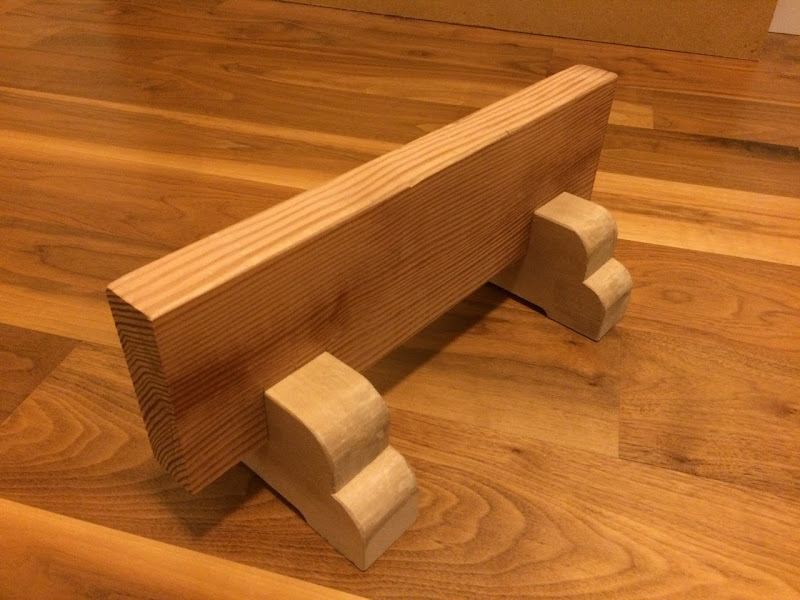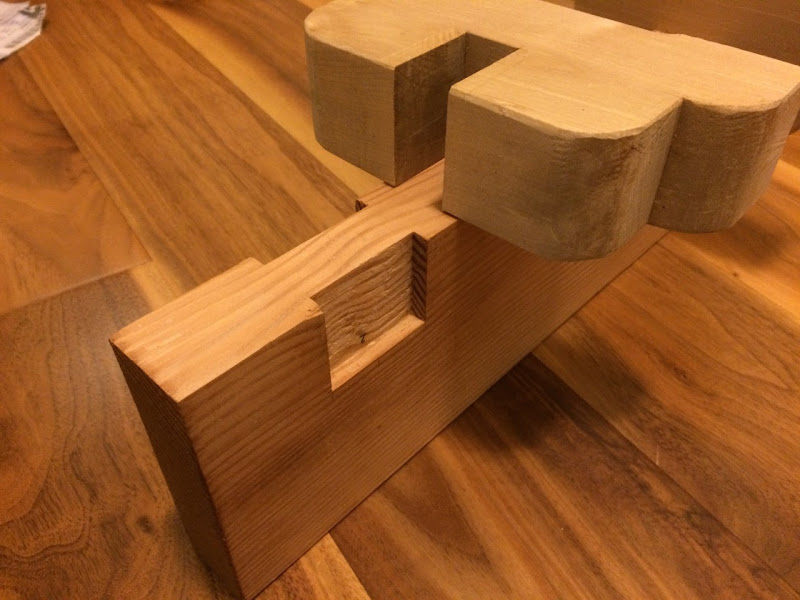Page 1 of 1
Low Horses
Posted: Fri Feb 05, 2016 7:51 pm
by Ken
I figure this project would be a good starting point and give me a useful shop tool. I'm mostly using Toshio Odate's plans, I made mine a touch longer. I have all the layout done, I'll hopefully start cutting soon.
I do have a question about layouts. In the Japanese method, typically, when are knifed lines used?

Re: Low Horses
Posted: Fri Feb 05, 2016 7:55 pm
by Chris Hall
Some carpenters knife some of, or most of, their lines, some do not use a marking knife at all. There are different schools of thought on the matter.
Re: Low Horses
Posted: Fri Feb 05, 2016 8:13 pm
by Ken
Chris Hall wrote:Some carpenters knife some of, or most of, their lines, some do not use a marking knife at all. There are different schools of thought on the matter.
Thank you, I figured it might be like that

I think I'll try it with out and see how I get along.
Re: Low Horses
Posted: Fri Feb 05, 2016 8:43 pm
by Chris Hall
Part of the decision to knife or not depends upon what sort of tooling you tackle the cut out with, and the propensity of that tool to tear out the surface or not. The knifed line can be the defining opening for other hand tools to gage off of when cleaning the cut out to the line, but one can also choose to gauge the cut (dimension and position) by an offset, a fence setting, a gage block, etc..
Also, whether the joint interfaces are visible or not, and whether the wood you are working is more prone to tear out than other woods if going to affect the decision. A though mortise might be knifed on the exit face but not on the entry face, for example.
Re: Low Horses
Posted: Fri Feb 05, 2016 11:26 pm
by Ken
Chris Hall wrote:Part of the decision to knife or not depends upon what sort of tooling you tackle the cut out with, and the propensity of that tool to tear out the surface or not. The knifed line can be the defining opening for other hand tools to gage off of when cleaning the cut out to the line, but one can also choose to gauge the cut (dimension and position) by an offset, a fence setting, a gage block, etc..
Also, whether the joint interfaces are visible or not, and whether the wood you are working is more prone to tear out than other woods if going to affect the decision. A though mortise might be knifed on the exit face but not on the entry face, for example.
Thank you, that makes a lot of sense.
Re: Low Horses
Posted: Fri Feb 05, 2016 11:40 pm
by Chris Hall
Ken wrote:Thank you, that makes a lot of sense.
Even a broken clock is right twice a day.
Re: Low Horses
Posted: Sat Feb 06, 2016 6:34 am
by djwong
Hi Ken,
Instead of Odate's low horse, I built one outlined in a short paper by Mark Grable. The paper may be found
here. I preferred it to Odate's because it did not require pegging the beam to the feet. The feet are instead held by a compression fit. The overall dimensions are similar to Odate's example.
Here are a couple of photos...


Re: Low Horses
Posted: Mon Feb 08, 2016 5:27 pm
by Ken
Sure, I see those after I cut everything

oh well... Gives me an excuse to make more

They're not super pretty, but I think they'll work well.

The joints came out nice and tight, no pegs or glue. I planed the tops nice and flat and leveled the feet.
Re: Low Horses
Posted: Mon Feb 08, 2016 6:20 pm
by SteveM
Good job

. They wouldn't stay pretty for long once they've been used anyway. I made mine pretty much the same - using Odate's design. The joints loosen (at least mine did) after some time, but its not really a problem.
Do any of work "on the floor"?
Re: Low Horses
Posted: Mon Feb 08, 2016 7:52 pm
by Ken
SteveM wrote:Good job

. They wouldn't stay pretty for long once they've been used anyway. I made mine pretty much the same - using Odate's design. The joints loosen (at least mine did) after some time, but its not really a problem.
Do any of work "on the floor"?
Thank you!
These I built on the bench, now that I have these I want to build a planing bench like Odate's and try working on the floor.


